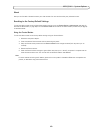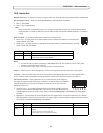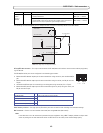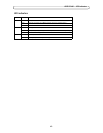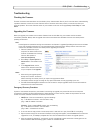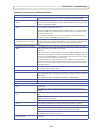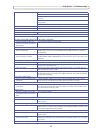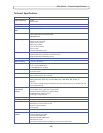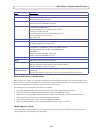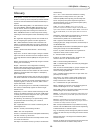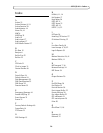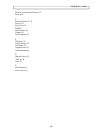
53
AXIS Q7401 - Glossary
communication, and there are hardware protocols and software
protocols.
(QoS) Quality of Service - QoS provides the means to guarantee
a certain level of a specified resource to selected traffic on a
network. Quality can be defined as e.g. a maintained level of
bandwidth, low latency, no packet losses, etc.
Router - A device that determines the next network point to
which a packet should be forwarded on its way to its final
destination. A router is often included as part of a network switch
(see below).
RTP- Real-Time Transfer Protocol. A transfer protocol designed for
the delivery of live content, e.g. MPEG-4.
RTSP (Real Time Streaming Protocol) - RTSP is a control
protocol, and a starting point for negotiating transports such as
RTP, multicast and Unicast, and for negotiating codecs. RTSP can
be considered a “remote control” for controlling the media stream
delivered by a media server. RTSP servers typically use RTP as the
protocol for the actual transport of audio/video data.
Simplex - In simplex operation, a network cable or
communications channel can only send information in one
direction; it's a “one-way street”.
SMTP - Simple Mail Transfer Protocol is the protocol used to
send e-mail across the Internet. SMTP authentication is a way
of allowing people outside of a domain to use an SMTP server
when sending e-mail.
SNMP - Simple Network Management Protocol. An application
layer protocol that facilitates the exchange of management
information between network devices. It is part of the
Transmission Control Protocol/Internet Protocol (TCP/IP)
protocol suite.
Subnet Mask - An IP address consists of two components: the
network address and the host address. “Subnetting’ enables a
network administrator to further divide the host part of the
address into two or more subnets. The subnet mask identifies the
subnet to which an IP address belongs.
Switch - Whilst a simple hub transmits all data to all devices
connected to it, a switch only transmits the data to the device it is
specifically intended for.
TCP/IP - Transmission Control Protocol/Internet Protocol. A
suite of network protocols that determine how data is
transmitted. TCP/IP is used on many networks, including the
Internet. TCP keeps track of the individual packets of
information and IP contains the rules for how the packets are
actually sent and received.
UDP - The User Datagram Protocol is a communications
protocol that offers a limited amount of service when messages
are exchanged between computers in a network that uses the
Internet Protocol (IP). UDP is an alternative to the Transmission
Control Protocol (TCP) and, together with IP, is also known as
UDP/IP.
Unicast - Communication between a single sender and a single
receiver over a network. A new connection is established for
each new user.
URL - Uniform Resource Locator. An “address" on the network.
Varifocal - A varifocal lens provides a wide range of focal lengths,
as opposed to a lens with a fixed focal length, which only provides
one.
WAN - Wide-Area-Network. Similar to a LAN, but on a larger
geographical scale.
Web server - A program on a computer that delivers the
resources (usually web pages) requested by the web user (the
client).



